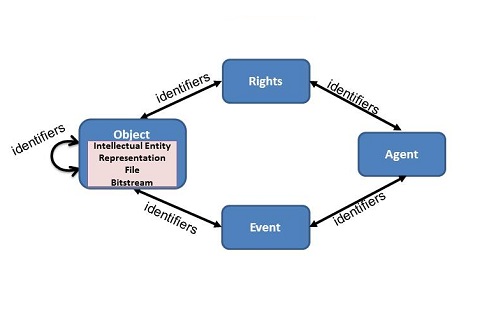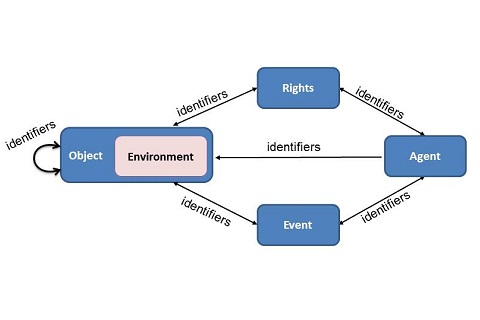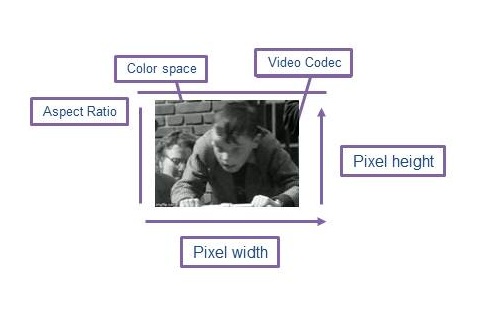What stood out for us at the Europeana AGM 2016?

On November 8 and 9, 2016 the Annual General Meeting (AGM) of the Europeana Network Association took place. In the beautiful new National Library of Latvia in Riga, Uldis Zarins opened the meeting that carried the theme “Show Us What You’ve Got”. There were demonstrations, chef’s tables, and talks from speakers such as Dan Cohen (Digital Public Library of America), Lora Aroyo (Free University of Amsterdam), and Mia Ridge (The British Library).
It was a jam-packed event with many presentations of note. But what were the absolute highlights? Maarten Brinkerink, Kelly Mostert, Gregory Markus picked three moments that stood out to them as inspiring and worth sharing with you and we picked one collaborative highlight.
MAARTEN’S HIGHLIGHT: “WORKING TOWARDS BETTER COPYRIGHT RULES FOR CULTURAL HERITAGE”
This panel reflected on how the current proposal for copyright reform links to the digital heritage domain, and what role the Europeana Network Association can play in the developments towards EU copyright reform.
As hosted by Paul Keller from Kennisland, the diversity of panelists also showed one of the biggest challenges for the Europeana Network in being effective in influencing the discussion on copyright reform to the benefit of cultural heritage organisations and users. Panelist Erik Buelinckx from the Belgium Royal Institute for Cultural Heritage summarized this challenge with the statement that the position of the Europeana Network will always be a “compromise”, since the network does not only include cultural heritage organisations, but also parties from the cultural industries. On the other hand he also emphasized that the cultural heritage ‘lobby’ in Brussels is underrepresented, so involvement from Europeana is very welcome there.
Paul Keller chairs the Copyright for Cultural Heritage panel - Photo by Europeana EU, CC-BY-SA
Emmanuelle Bermes from Bibliothèque de France exemplified the need for compromises in the network, by pleading for a ‘balanced’ approach, not only favoring the suppliers and users of cultural heritage, but also its creators. Bermes was quite critical of the position Europeana has taken towards copyright reform in this regard. The call for “balance” by Bremes, however, seemed in stark contrast with the 20th century black hole that currently exists as presented by Paul Keller in the introduction to the session and show that creators currently enjoy a surplus of protection, that hinders much of our more recent cultural heritage to be available for European citizens. This is one of the main problems Europeana addresses in its copyright reform advocacy.
A more favourable view on Europeana its advocacy activity was given by Fred Truyen from Photoconsortium, who stressed the value of access to historical collections. He then called for a more proportionate balance between the individual right of the creator and the “cultural rights” of the collective, given the very limited economic interest that is actually at stake in the case of these type of collections. Antje Schmidt from Museum für Kunst und Gewerbe Hamburg added that vast amounts of ‘out-of-commerce’ works are currently unavailable, because the rights holders are unknown (so-called “orphan works”). Existing measures like Extended Collective Licensing or the Orphan Works Directive have not changed this situation extensively according to Schmidt, because of the complicated and resource consuming practicalities that are involved.
Liam Wyatt offered some insight in what external networks with a similar interest in the public good expect from the Europeana Network Association in the copyright reform discussion. He explained that the Wikimedia Free Knowledge Advocacy Group EU is - among other things - lobbying for “no new protection on digitisation”, referring to the practice of claiming a new copyright for the sheer act of digitising works in the Public Domain. He explained that such practice is at odds with the extension of possibilities to make cultural heritage available to the public and should hence be renounced by cultural heritage organisations as part of their response to the copyright reform proposal.
The panel indeed showed the difficulty to both come to a consensus within the network, while still having a firm position in the copyright reform debate that creates more opportunities for cultural heritage organisations and their users to change the world with culture than exist now. While the Netherlands Institute for Sound & Vision contributes to the Europeana Network Position on Copyright Reform, it will in addition also make its specific wishes and requirements known to make sure a strong voice for more accessible and reusable cultural heritage is heard in Brussels. We encourage other institutions to do the same!
OUR COLLABORATIVE HIGHLIGHT: TRANSCRIBING EUROPEANA 1914 - 1918
 Launch of the Transcribathon at the AGM - Photo by Transcribathon.com
Launch of the Transcribathon at the AGM - Photo by Transcribathon.com
The AGM saw the launch of a promising new crowdsourcing tool and model for end-user engagement by Ad Polle (Europeana Foundation) and Frank Drauschke (Facts & Files): Transcribathon.eu. This tool allows users to transcribe documents of various kinds, in order to make them more accessible.
During the AGM this tool was put into practice in the form of the Transcribing Europeana 1914-1918 International Transcribathon Challenge. The goal of this event was to kick-start an ongoing online transcribathon, aimed at transcribing the digital document of Europe.
For the first transcribathon Maarten Brinkerink, Lizzy Komen and Evelien Wolda (remotely) from the Netherlands Institute for Sound & Vision and Nienke van Schaverbeke from Europeana joined forces as #teamnl to transcribe documents in Dutch. TeamNL transcribed 10619 characters. At the end of the transcribathon Maarten presented not only the results of the team effort, but also some initial finding with using the tool. He described the experience of the transcribathon challenge as “getting up close and personal” with these historical documents. For example finding phrases like “Zeer bemind vrouw” (“Greatly beloved wife”) that really pull you into the narrative of these documents. On a more functional level he also stressed the engaging nature of the tool, but also that fact that some of the features were still a bit ‘buggy’. He also stressed that the tool could benefit from taking into account some of the general learnings crowdsourcing, as presented at the AGM by Lora Aroyo. Finally he pointed to the potential of combining the crowdsourced transcription with automatic processing techniques like OCR for handwritten texts.
A jury composed of Stephan Bull, Mia Ridge and Harry Verwayen awarded prizes in the categories Transcription and Presentation. See who won here (#teamnl was not among them, but we all got a very nice certificate), have a go yourself or check out more re-usable photos from the Transcribathon by Maarten Brinkerink.
KELLY’S HIGHLIGHT: GREAT RE-USE EXAMPLES IN IGNITE TALKS
 A page out of the Europanorama Book - Photo by Peter Hofmann
A page out of the Europanorama Book - Photo by Peter Hofmann
This year some of the ignite talks came from outside the ‘usual’ Europeana network and took me by surprise. Peter Hofmann presented his Europanoramabook which looked stunning. It can be incredibly valuable to have an archive interpreted by a different thinker, in this case a book designer. Peter used the Europeana API to make the book, and created an impressive data visualization of cultural objects of various European countries. Could he have been inspired by Lev Manovich’ talk at last years Europeana Creative Culture Jam in Vienna?
GREG’S HIGHLIGHT: ASSESSING IMPACT OF DIGITAL CULTURAL HERITAGE
On day 1 of the AGM, Deputy Director of Europeana, Harry Verwayen addressed how Europeana is working towards measuring the impact of cultural heritage on European society. This is no easy task. Tracking financial impact is suspect at best although there undoubtedly has been some. Measuring the impact on society or the creation of a stronger feeling “Europeanness” is something that has plagued European Studies scholars and Eurobarometer surveys from the beginning of this little experiment called the EU. So how can Europeana assess this vaporous data?
Building a foundation on Professor Simon Tanner (King’s College London) 2012 paper ’Value Based Scorecard Approach to Impact Assessment’ Europeana uses different lenses to examine the myriad of ways digital cultural heritage can impact society just like Hubble Telescope Project uses different lenses to inspect the cosmos. These lenses Europeana uses are: learning, utility, existence, legacy and community. You can read the whole case study here. However, the assessment experiment has been considered a success by Europeana and partners. The only missing substantial data is the actual economic impact. Since the project is not selling anything nor collecting ad revenue, or any conventional form of commercial gain, it’s difficult to quantitatively assess the impact of these projects.
There is no doubt that Europeana and re-use of digital cultural materials project have an impact on society and community. But the European Commission and other government bodies want to see the financial impact. At this time, Europeana could not stand on its own without EU funding and that’s fine since it provides a service to Europeans. But if and when the time comes to justify its existence, being able to show data like this Assessment Project does will be very valuable.
MORE THINGS WE DID AT THE AGM:
- Greg Markus presented the RE:VIVE project during the ignite talks. Check out the latest RE:VIVE music release ‘Damrak’ here!
- Johan Oomen chaired the EuropeanaTech R&D session which featured talks and panels from Joan Cobb (Getty Research Institute) and Mia Ridge (British Library). Sound & Vision currently serves as the Community Manager for EuropeanaTech.
